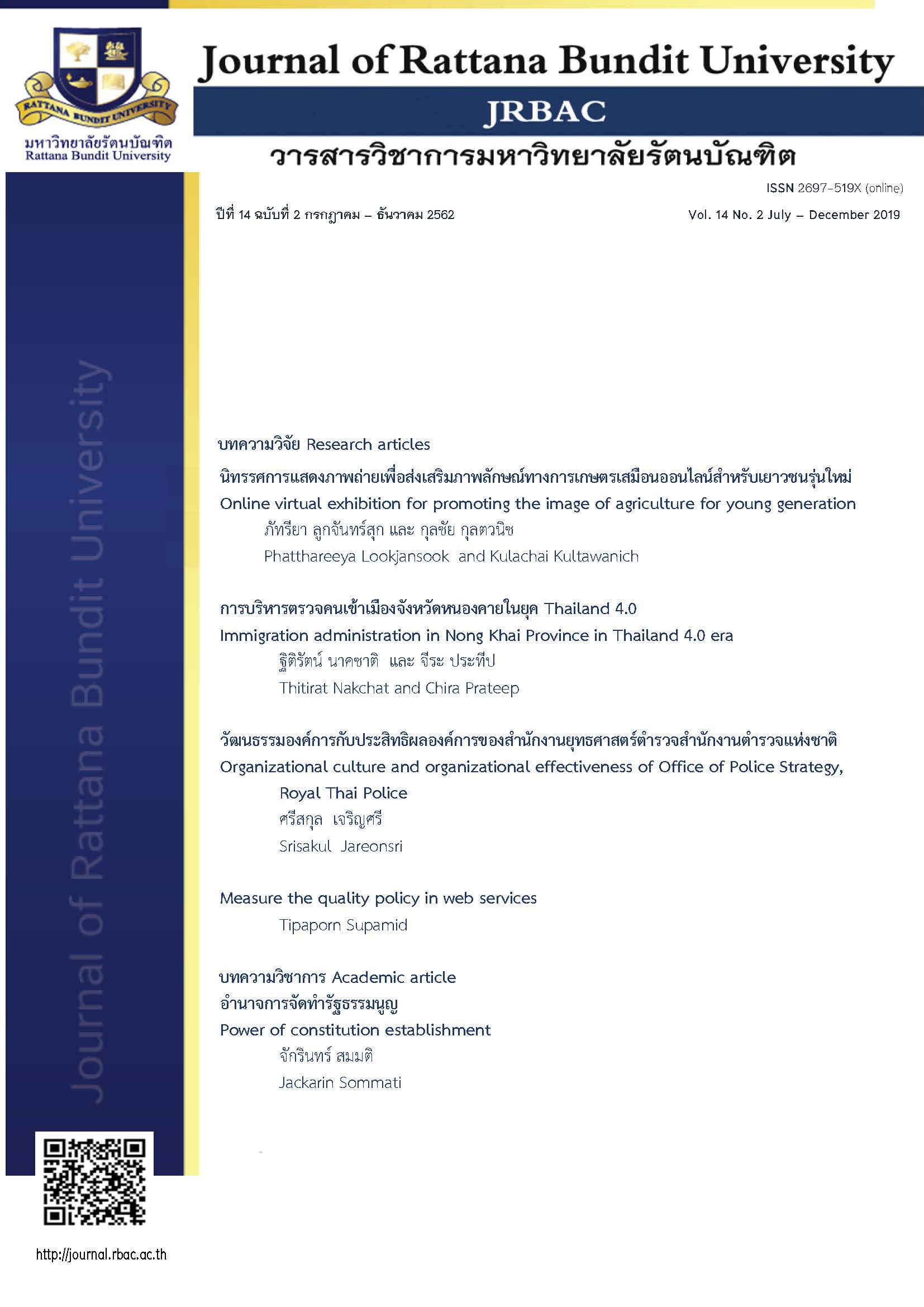Measure the quality policy in web services
Main Article Content
Abstract
The purpose of this research was to measure the ability of information exchange and to measure the maturity of the web service quality policy. Due to the risk arising from various databases in the information and communication system that may cause damage. However, data may be destroyed. The risks are from data intruders Identity theft, such as customer information, supplier information entering to edit information, etc. In addition, this research has studied the quality policy characteristics of quantitative research methods of selection of samples group sampling method of the sample in the data set tools used to gather information and data analysis after that, the quality policy from the web service was analyzed. It was found that the executives of the software project had knowledge about quality policies with an average of 71%. However, the application of the second data set and the third data set showed that the administrators of the software project had a moderate level of knowledge about the quality policies with an average of 72%. Therefore, the comparison figure at 4.4 - 4.5 found that both of the above examples there are significant differences with an average of 60 - 67%
Article Details
References
Böger, D.D., Fraga, J.D., Mafra, P.M., & Wangham, M.S. (2009). A model to verify quality of protection policies In Composite Web Services, in Proceedings of the 2009 IEEE International Conference on Web Services
(part 1), art. no. 5190684, 629-636.
Chrissis, M.B., Konrad, M. and Shrum, S. (2003). CMMI guidelines for process integration and product improvement. Boston: Addison-Wesley.
Crawford, J. (2007). Using the project management maturity model: Strategic planning for project. (2nd ed.). New York: Auerbach. DOI: 10.1201/b17643.
Ehsan, N., Malik, O.A., Shabbir, F., Mirza, E., & Bhatti, M.W. (2010). Comparative study for PMBOK & CMMI frameworks and identifying possibilities for integrating ITIL for addressing needs of IT service industry.
IEEE International Conference on Management of Innovation & Technology, 113-116.
Jiawei Han, Jian Pei, Micheline Kamber. (2011). Data mining: Concepts and techniques. (3rd ed.) SanFrancisco: Elsevier Science & Technology.
Jihyun Lee, Danhyung Lee, and Sungwon Kang. (2007). An overview of the business process maturity model (BPM), In Advances in Web and Network Technologies, and Information Management: APWeb/WAIM
International Workshops: DBMAN 2007, WebETrends 2007, PAIS 2007 and ASWAN 2007, Huang Shan, China, June 16-18, 2007. Proceedings (pp.384-395).
Kerzner, Harold. (2005) Using the project management maturity model: Strategic planning for project management. Retrieved from https://www.semanticscholar.org/paper/Using-the-Project-ManagementMaturity-Model%3A-for-Harold-Kerzner/dee95b12eb3aa347b624c111194649415338cf04
Zhang Lianying, He Jing & Zhang Xinxing (2012). The Project Management Maturity Model and Application Based on PRINCE2. Proceedina Engineering: 2012 International Workshop on Information and
Electronics Engineering, 29, 2012, 3691-3697.


